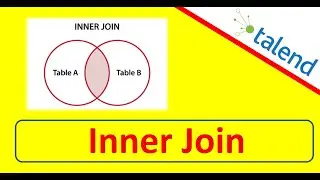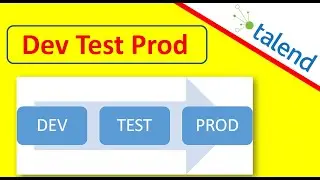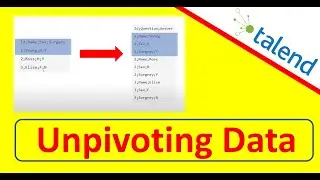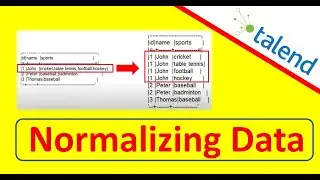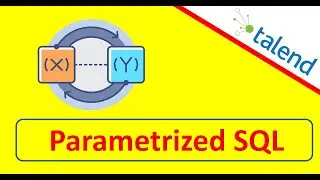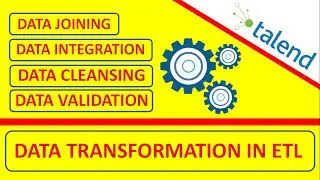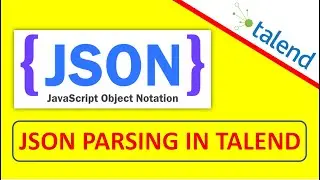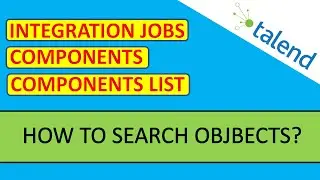WHAT ARE CONNECTIONS IN TALEND? (ROW, ITERATE, TRIGGER,LINK)
My Complete Talend Course on Udemy:
https://www.udemy.com/course/talend-d...
--------------------- FREE COUPONS OF MY UDEMY COURSE -------------------------------------
I am giving away 3 Discounted Coupons for my Udemy Course every Month.
If you are interested to get them, you need to drop a comment in the Comments Section and my Algorithm will randomly pickup 3 students with whom I will share the discounted Coupons via email.
Comment Should Include: "UDEMY COUPON: I AM IN"
Once I pickup your names, I will ask you to share your email address with me.
The results will be announced soon!
--------------------------------------------------------------------------------------------------------------------------------
There are various types of connections which define either the data to be processed, the data output, or the Job logical sequence. Right-click a component on the design workspace to display a contextual menu that lists all available links for the selected component.
(1) Row connection
A Row connection handles the actual data. The Row connections can be main, lookup, reject or output according to the nature of the flow processed.
[a] Main
This type of row connection is the most commonly used connection. It passes on data flows from one component to the other, iterating on each row and reading input data according to the component properties setting (schema).
[b] Lookup
This row link connects a sub-flow component to a main flow component (which should be allowed to receive more than one incoming flow). This connection is used only in the case of multiple input flows.
[c] Filter
This row link connects specifically a tFilterRow component to an output component. This row link gathers the data matching the filtering criteria. This particular component offers also a Reject link to fetch the non-matching data flow.
[d] Rejects
This row link connects a processing component to an output component. This row link gathers the data that does NOT match the filter or are not valid for the expected output. This link allows you to track the data that could not be processed for any reason (wrong type, undefined null value, etc.).
[e] ErrorReject
This row link connects a tMap component to an output component. This link is enabled when you clear the Die on error check box in the tMap editor and it gathers data that could not be processed (wrong type, undefined null value, unparseable dates, etc.).
[f] Output
This row link connects a tMap component to one or several output components. As the Job output can be multiple, you get prompted to give a name for each output row created.
[g] Uniques/Duplicates
These row links connect a tUniqRow to output components.
The Uniques link gathers the rows that are found first in the incoming flow. This flow of unique data is directed to the relevant output component or else to another processing subjob. The Duplicates link gathers the possible duplicates of the first encountered rows. This reject flow is directed to the relevant output component, for analysis for example.
[h] Multiple Input/Output
Some components help handle data through multiple inputs and/or multiple outputs. These are often processing-type components such as the tMap.
(2) Iterate connection
(3) Trigger connections
Trigger connections define the processing sequence, so no data is handled through these connections. The connection in use will create a dependency between Jobs or subjobs which therefore will be triggered one after the other according to the trigger nature.
Trigger connections fall into two categories:
subjob triggers: On Subjob Ok, On Subjob Error and Run if,
component triggers: On Component Ok, On Component Error and Run if.
OnSubjobOK (previously Then Run): This link is used to trigger the next subjob on the condition that the main subjob completed without error. This connection is to be used only from the start component of the Job.
These connections are used to orchestrate the subjobs forming the Job or to easily troubleshoot and handle unexpected errors.
OnSubjobError: This link is used to trigger the next subjob in case the first (main) subjob do not complete correctly. This "on error" subjob helps flagging the bottleneck or handle the error if possible.
OnComponentOK and OnComponentError are component triggers. They can be used with any source component on the subjob.
OnComponentOK will only trigger the target component once the execution of the source component is complete without error. Its main use could be to trigger a notification subjob for example.
OnComponentError will trigger the sub-job or component as soon as an error is encountered in the primary Job.
Run if triggers a subjob or component in case the condition defined is met.
(4) Link connection
Enjoy the Video!













